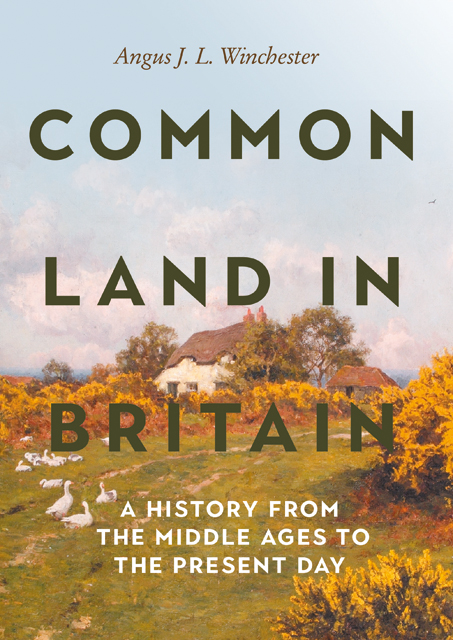Chapter 10 - Nether Wasdale Common, Cumberland
Published online by Cambridge University Press: 20 December 2022
Summary
Cumberland CL 59.
The fell common at Nether Wasdale, a scattered hill farming community on marginal land on the western edge of the Lake District, provides an example of an upland grazing common which continued to be managed by a manor court until the 1930s. Nether Wasdale Common (Figures 44 and 45), covering 4,994 acres (2,021 ha) and accounting for 58 per cent of the land surface of the civil parish, consists of rough, mountainous ground carrying acidic soils on the volcanic rocks of the central Lake District. It rises steeply from the northern shore of Wast Water, stretching back into the higher fells to the summit of Haycock (797m) on the watershed with Ennerdale. The common includes the remote Stockdale valley, drained by the upper reaches of the River Bleng. Its resources were those typical of commons on the Lake District fells: grazing (summer pasture for cattle; year-round grazing for heafed Herdwick sheep); bracken, cut under the common right of estovers (which remained important until the twentieth century); and peat for fuel.
Nether Wasdale was part of the private forest of Copeland, belonging to the medieval barony of Egremont. When the forest was partitioned between heiresses in 1338, Nether Wasdale became part of the ‘Middleward’, along with the township of Kinniside and the wastes of Stockdale Moor, a seigniorial agistment ground lying between them, over which both townships possessed grazing rights. Nether Wasdale Common was bounded on the east by the ‘deer fence’ of Bowderdale, a section of the fells retained as private pasture by the lords of the barony, which had been enclosed by the 1540s.1 Nether Wasdale descended as part of the Percy estates in western Cumberland to the Wyndham family, later Lords Leconfield and Egremont. In 1979 the common, along with the estate’s other Lake District commons, passed to the National Trust in lieu of death duties.
In 1578 the forty-three holdings in Nether Wasdale each had appurtenant rights to ‘sufficient common quo; on the fell. Three individuals living outside the manor, in neighbouring lowland communities, also had grazing rights, termed ‘greslands’, each of which gave the right to graze a fixed number of livestock (four, five or six beasts) on the common. Like the agistment ground of Stockdale Moor, these rights in gross gave lowland farms access to summer grazing on the fells.
- Type
- Chapter
- Information
- Common Land in BritainA History from the Middle Ages to the Present Day, pp. 215 - 222Publisher: Boydell & BrewerPrint publication year: 2022



